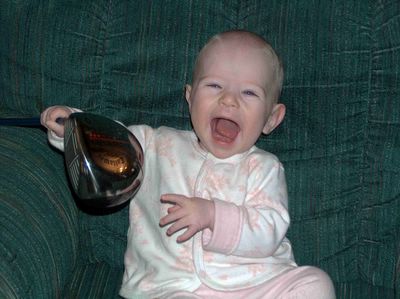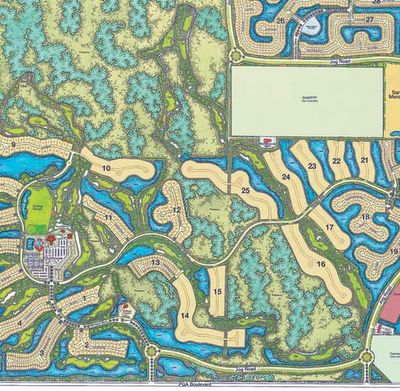Two years ago, on my first trip to Scotland, my long suffering golf widow and spouse, Jennifer, had to write a story for the Globe and Mail during an evening of our trip. I used that as an excuse to take off down small, winding roads to find a place to play a quick nine holes.
What I discovered was Lilliesleaf, a little course at the end of a road that was marked with a sign that said simply, "golf." That was enough. Anyway, the story I wrote about the experience is below. The funny thing about this is that, two years after playing it, the owners of the course found the story and wrote me a nice note, letting me know how touched they were about it and wishing me back to the wonderful Scottish Borders.
The story appeared on the now defunct "Voices" series on PGATour.com. You can find the link here, or read the story below.
Voices: Finding golfing Nirvana in Scotland
March 4, 2004
By Robert Thompson
PGATOUR.COM Contributor |
|
Many spend their entire life trying to find golfing Nirvana.
Some find it when a chance invite takes them to one of the world's most exclusive and great golf courses, places with names like Augusta, Pine Valley, Cypress or Seminole. Others find it when they hit the approach over the beach to the eighth green at Pebble Beach. Some encounter golfing perfection when playing with a father or son at their home course, often a local muni where they've teed it up for years.
For me, it came on in the early evening in Scotland, but it didn't involve anything at St. Andrews, Turnberry, Dornoch or any of the other famed venues in the home of golf. Rather, I found perfection on a course that cost me a total of $10 in a place whose name you've sure to have never have heard.
The whole experience began innocently enough on a trip nearly a year ago with my long-suffering wife, Jennifer, who often finds herself widowed by my need to hit a little white ball. In this case, after a long day's drive to a bed and breakfast near the small town of Jedburgh in the Scottish Borders, Jennifer needed to finish writing a story for a Canadian newspaper. That, of course, gave me the needed excuse to grab my clubs and jump in our rental car. Destination: unknown.
Armed with a map that highlighted some of the area's golf courses, I set out down a one-lane road in search of a course designed by famed British Open champ Willie Park. Half an hour of driving later, I seemed utterly lost and no nearer the Park-designed track I was seeking. It was nearing 7 p.m. and daylight would be fading within a couple of hours. Thinking my quest was in vain, I prepared to turn the car around and head back to the B&B.
That's when I saw the sign. It read "Golf" with an arrow pointing down a road seemingly more narrow than the one I had been driving on. My map didn't show a golf course anywhere in the vicinity, but like Alice following the white rabbit, I decided to let the sign guide me.
Fifteen minutes later, after a series of hair-raising turns and one near encounter with a large piece of farm machinery, another sign appeared, this one directing me to a small lane that led up a hill. The lane swerved through a series of large pines whereupon my car emerged in a makeshift gravel parking lot. In front of me lay a golf course, though unlike anything with which most North Americans are accustomed.
For starters, it appeared the course was empty, without a soul in sight. All the things most golfers in North America are used to -- a lush pro shop full of $5 golf balls and logoed shirts -- were missing.
In place of an opulent clubhouse was a small shack. A small box was erected on the side of the shack with instructions as to the terms of payment. I'd read of such things, but had never actually experienced an "honor box." After flipping four coins into the box and slipping a score card into the pocket of my jacket, I grabbed my bag and walked to the first tee box.
I'd be lying if I said the course was of a remarkable caliber. With the exception of some tee boxes and roughed out bunkers, it appeared the owners of Lilliesleaf did not move any land in creating their course. Like many great golf courses, the course simply followed the land, but the piece of property did not appear to possess any spectacular features.
That all changed when I reached the fifth hole, which appeared to be an innocuous, 180-yard par 3 on my scorecard entitled "Burn." The reality was much different.
The tee box was perched at the edge of the property and aimed toward a small green. On one side of the green was a large hill, while the other side of the green was protected by a slight wandering creek. Sheep bounded around the hole, though it wasn't until I went to putt out that I found the green was surrounded by a wire designed to give a jolt to any animal trying to intrude.
With a tough downhill tee shot to a lumpy green cut closely over a creek, the hole was beautiful and treacherous at the same time. I'd found it -- hidden greatness. The hole was perfect.
I hit ball after ball at the unassuming green for 10 minutes, trying to gauge the appropriate way to deal with the whipping wind which pushed balls dangerously near the creek. It was fascinating and remarkable.
I imagined this was how the game was played in Scotland, before televised championships with $1 million purses altered everything.
All of this left me feeling a bit like Michael Bamberger, the noted Sport Illustrated author who had a similar experience when he was asked to venture onto a course hidden in a sheep pasture near Crieff. Bamberger chronicled it in his great book, To the Linksland. The rest of my round at Lilliesleaf flew by as I hit my final shots thinking more about the course's one remarkable hole than my game.
I'm heading to Scotland again in another month to tackle some more of the country's famed links. Though most of the courses I'm planning to play this time have names like North Berwick and Muirfield, who knows -- perhaps a little sign hidden on a small country road will lead me on another golfing adventure.



%20.jpg)


 Blog Directory
Blog Directory
